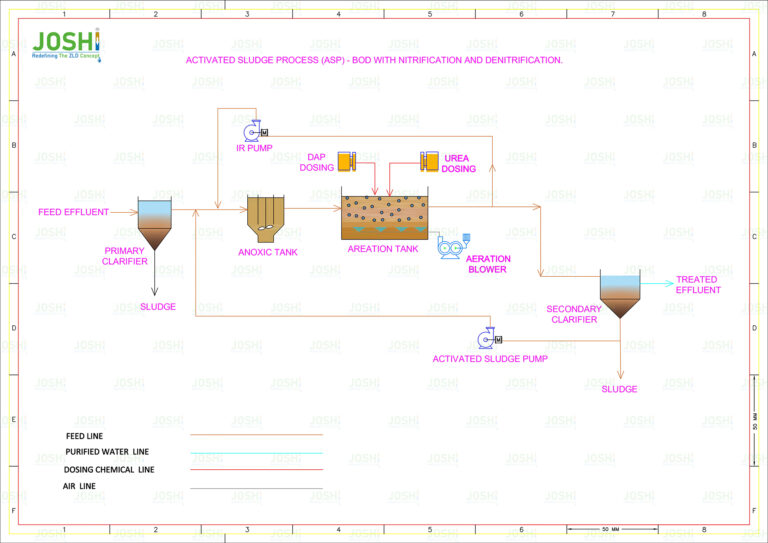Activated Sludge Process (ASP)
The activate sludge process is a widely use biological wastewater treatment method that removes organic matter, nutrients, and suspend solids from wastewater. It involves the use of microorganisms to break down and consume organic pollutants, converting them into harmless byproducts.
Process Steps
Aeration: The wastewater, along with the active sludge, is introduce into an aeration tank. Air or oxygen is continuously supplier to the tank to maintain a high dissolve oxygen level. The oxygen supports the growth and metabolism of the microorganisms, allowing them to oxidize and degrade organic pollutants.
Mixing: The aeration tank is equippe with mechanical mixers or diffusers to ensure thorough mixing of the wastewater and active sludge. This promotes contact between the microorganisms and the organic matter in the wastewater, facilitating the biological treatment process.
Biological degradation: The microorganisms in the active sludge utilize the organic matter in the wastewater as a food source. They metabolize the organic compounds, breaking them down into simpler compounds, such as carbon dioxide, water, and microbial biomass. This process, known as biodegradation, reduces the concentration of organic pollutants in the wastewater.
Settling: After the aeration stage, the wastewater and active sludge mixture enters a settling tank, also call a clarifier or secondary sedimentation tank. In this tank, the active sludge particles and other suspend solids settle to the bottom under the force of gravity, forming a sludge layer. The clarifie water, known as effluent, is then collected from the top of the tank.
Sludge recycling: A portion of the settle sludge, known as the return activated sludge (RAS), is recycled back to the aeration tank to maintain a stable population of microorganisms. This ensures continuous treatment and helps maintain the system’s desired microbial activity and biomass concentration.
Sludge disposal: Excess sludge, also known as waste-active sludge (WAS), is periodically remove from the system. This sludge may undergo further treatment processes, such as digestion or dewatering, before disposal or beneficial reuse. As the water flows through the tubes, the suspend solids present in the water begin to settle due to gravity. The incline tubes provide a longer settling path, allowing for more time for the solids to settle. The settle solids slide down the tubes and accumulate at the bottom of the tank. The clarifie water exits the Lamella Clarifier from the top and can be further treat or discharge as per the require standards. The sludge collect in the sludge hopper is periodically remove for further treatment or disposal.
After the flocculation stage, the water proceeds to the settling stage within the same tank. The velocity of the water flow is reduce, allowing the form of flocs to settle to the bottom of the tank by gravity. The settle particles, along with the form of sludge, are collect and remove as sludge from the tank. The clarified water, known as the supernatant, is collect from the upper part of the tank, typically using a collection mechanism or launder system. It is then further treat through filtration, disinfection, or other advance treatment methods to achieve the desired water quality.
Significance
The active sludge process is effective in removing organic pollutants, including biodegradable compounds, from wastewater. It can also achieve some level of nutrient removal, such as nitrogen and phosphorus, depending on the specific configuration and design of the treatment system.
The process is widely used in municipal wastewater treatment plants and industrial facilities to treat domestic sewage and various types of industrial wastewater. It is known for its efficiency, versatility, and ability to handle varying influent characteristics.
Targeted Impurities
- COD
- BOD
- Nutrient
- NO2
- NO3
- Phosphorus






